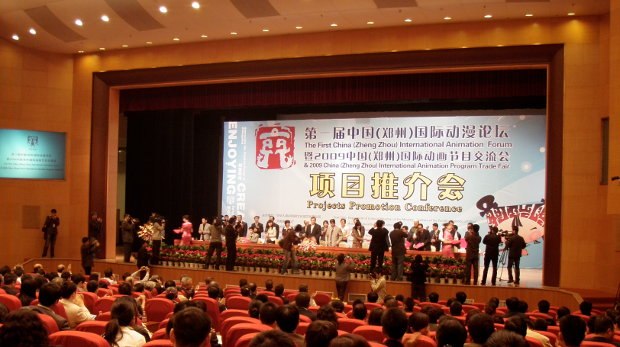The growth of the Trans-Pacific animation production pipeline has created business opportunities for animation communities both in Asia and abroad.
Growth. Opportunity.
A tremendous upsurge in animation production. India. China. Korea. ASIA…
What are the benefits? What are the pitfalls?
In my last blog, I spoke about the importance of doing deals the old-fashioned way – getting to know your business partner prior to signing a binding agreement that serves to tie your fortunes together for any period of time.
As I pointed out, such deal-making strategy is especially important given the new relationships that are forming in Asia amongst the Asian and Western animation communities.
For years, major US animation studios and networks have outsourced production work to Asia. We’re now truly feeling the effects: top US animation personnel out of work, smaller animation production facilities forced to close and the escalating problem of no work for the foreseeable future.
Glass half-full or half-empty?
While it’s marked the end of an era for some, others have taken advantage of the same opportunities that the studios and networks have found: namely, Animation Production in Asia.
Travel to any Asian country and you’re sure to find quick examples of Asian home-grown animation: from the commercials on large monitors at the airport to television shows playing in the lounge at the hotel to consumer products for sale in the local marketplace and shopping areas.
Now, Asia is not only producing animation product for regional consumption but is also producing product for an international audience. Work-for-hire deals between Asia and the West are in abundance. Asian studios have grown at a very rapid pace as production facilities in each country compete with production facilities in other countries to secure production work from the West.
While the number of small to mid-sized animation production studios in the US continues to decrease, Asia has seen a tremendous rise in animation production. Why?
Cost to produce in Asia is relatively inexpensive when compared to the cost to produce in the US. India, China and Thailand are less expensive zones than Korea, which in turn remains considerably less expensive than the US.
Talented workforce across Asia (especially in areas such as Korea, India, China, Thailand, Malaysia and Singapore) results in animation that US studios, networks and consumers alike find acceptable.
In many countries, governments tend to support the growth of the animation industry – recognizing that animation production brings increased jobs and revenue into the country.
Cost, talent level and government support – 3 big reasons why the Asian animation industry continues to grow.
Now is the time for US animation entities to actively seek co-production opportunities with their counterparts in Asia. Many Asian countries promote conferences and markets that exist to explore such relationships. The time and money spent attending a few conferences can pay off through the establishment of long-term business relationships resulting in increased financial revenue.
International Animation Consulting Group (IACG), of which I am a partner, regularly participates in such markets and conferences to promote co-production ventures between East and West.
Until next time...
Be well. Travel safely.
Frank M. Lunn
Partner, International Animation Consulting Group








